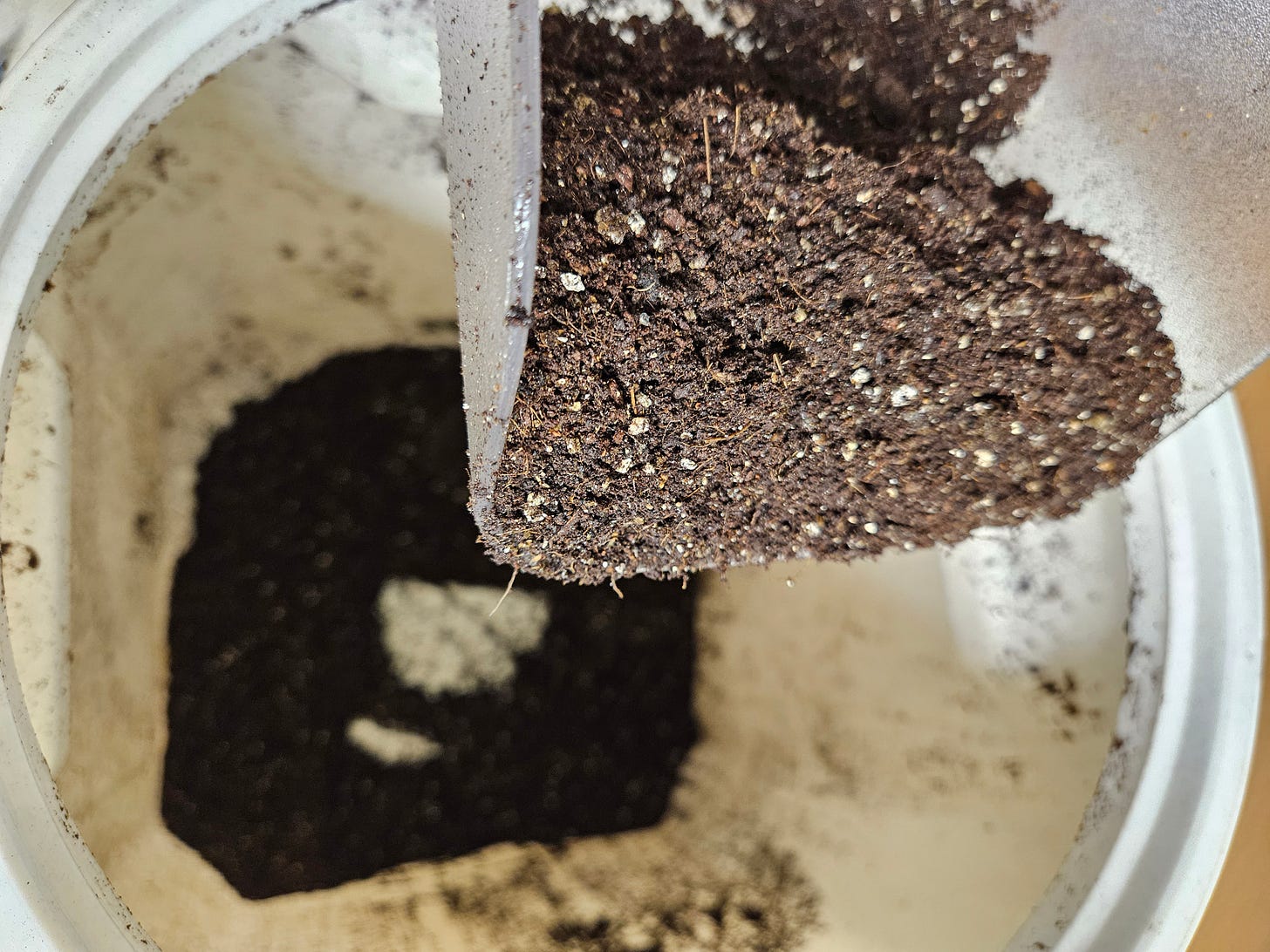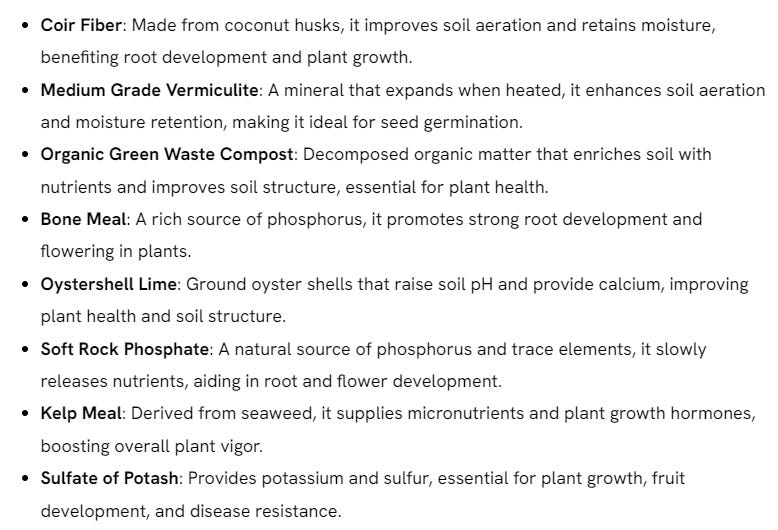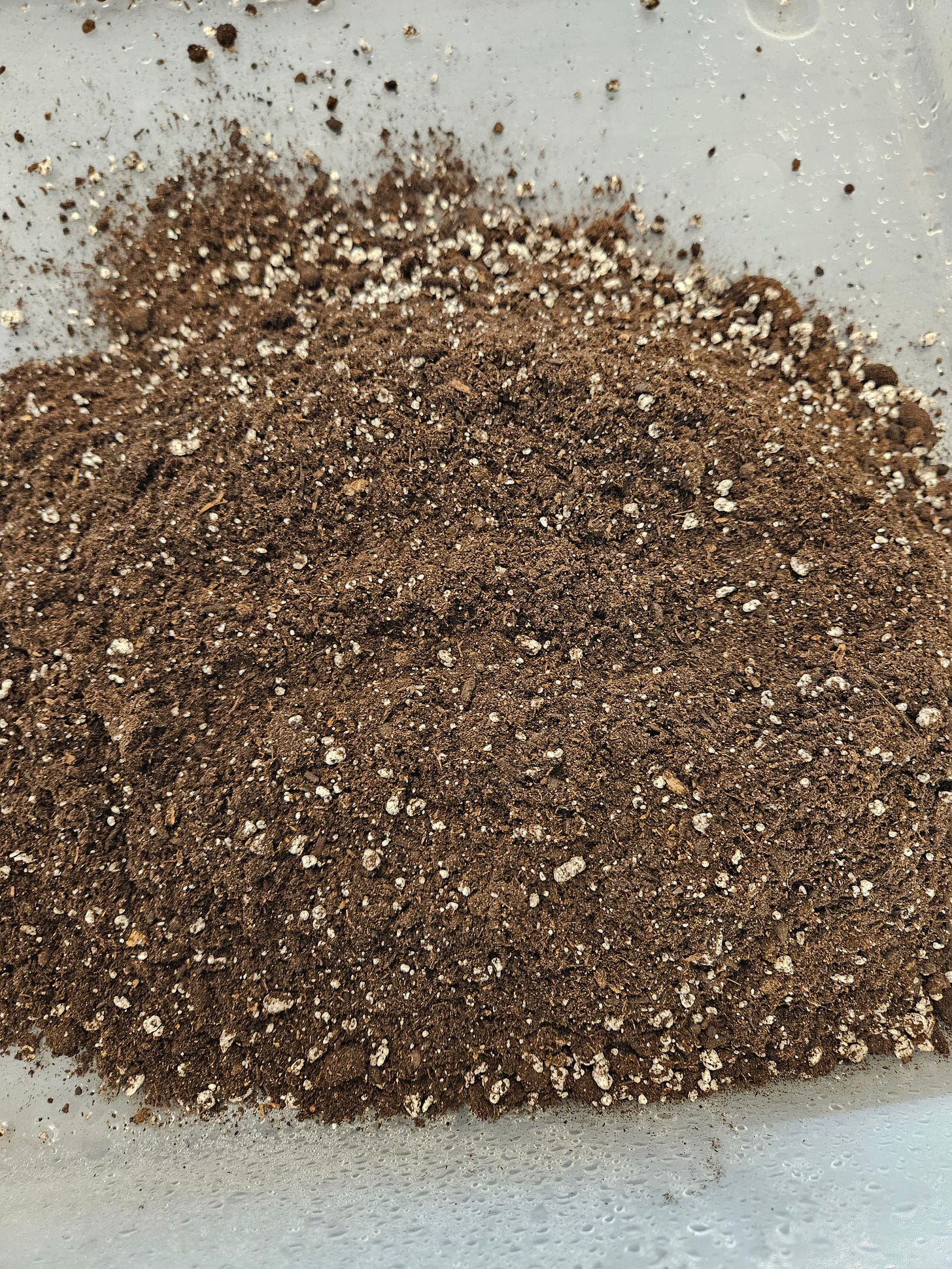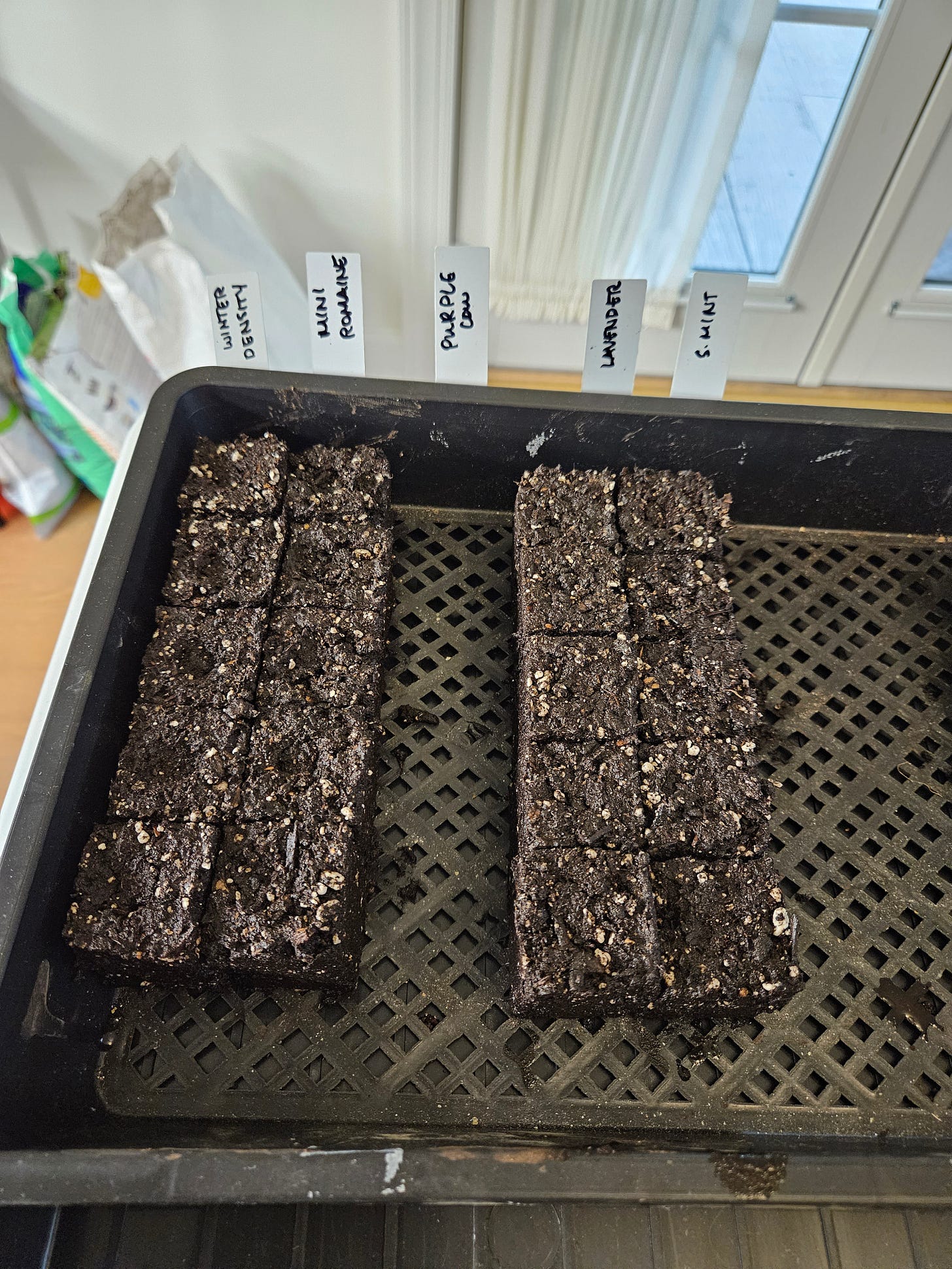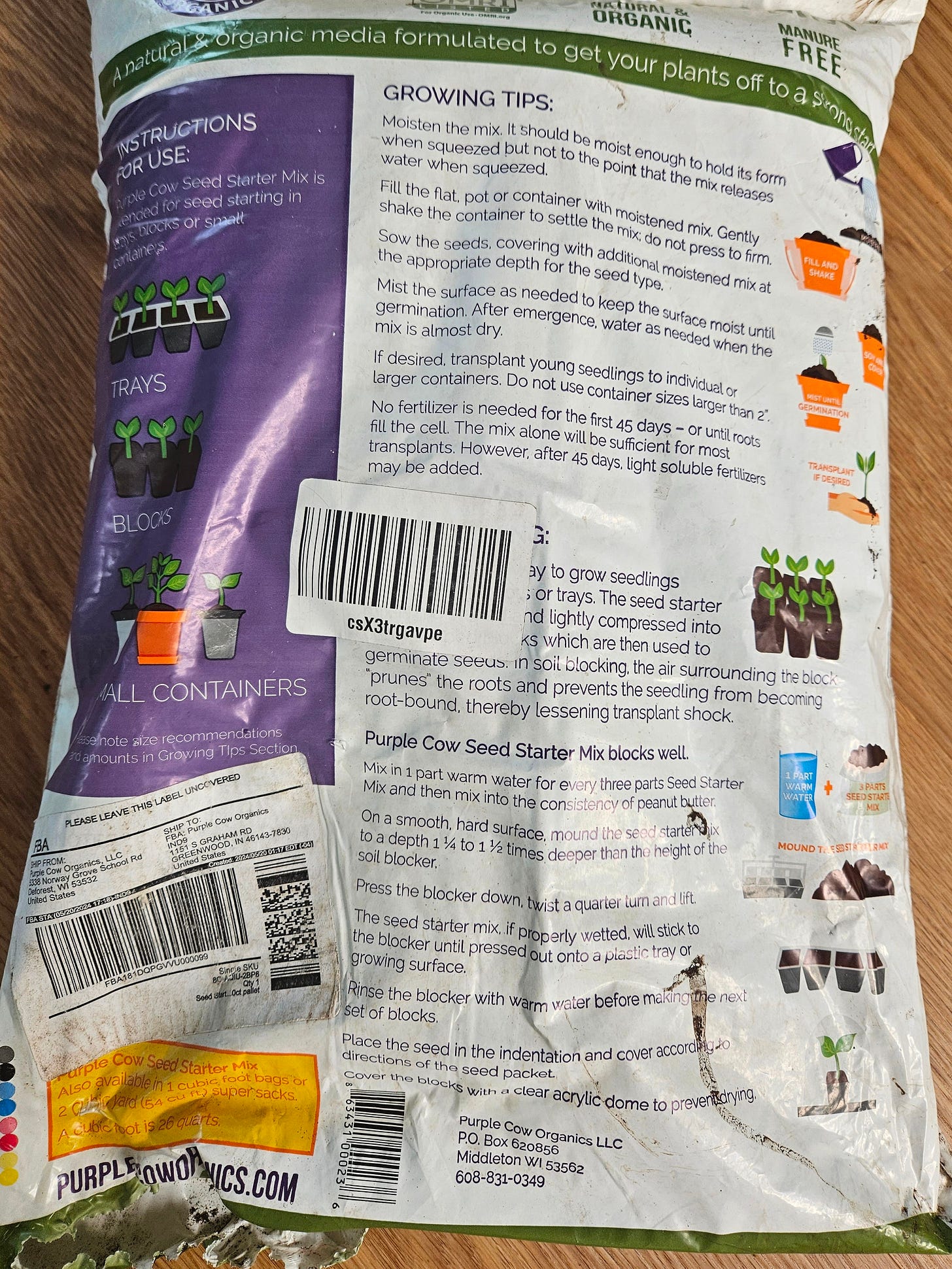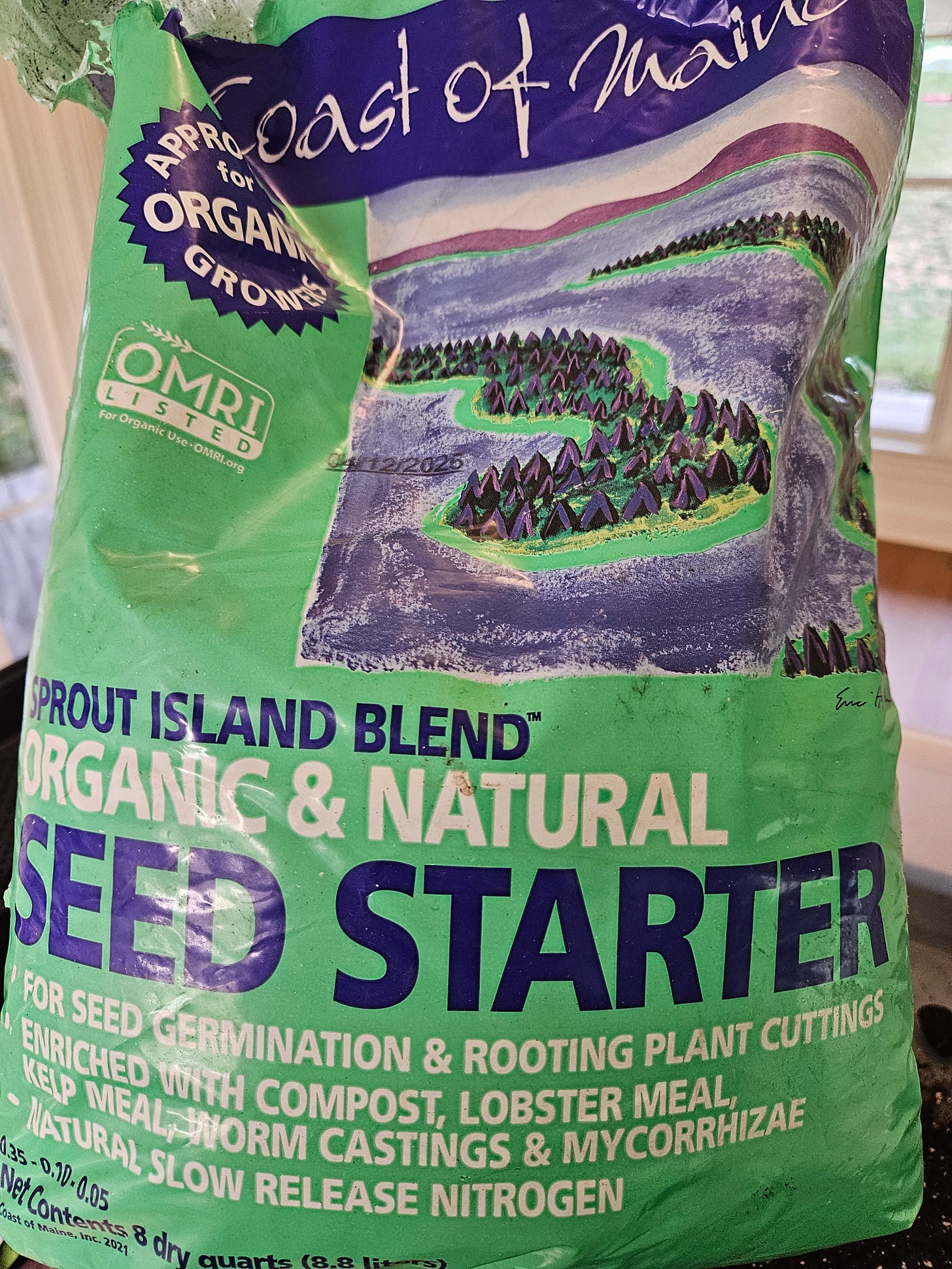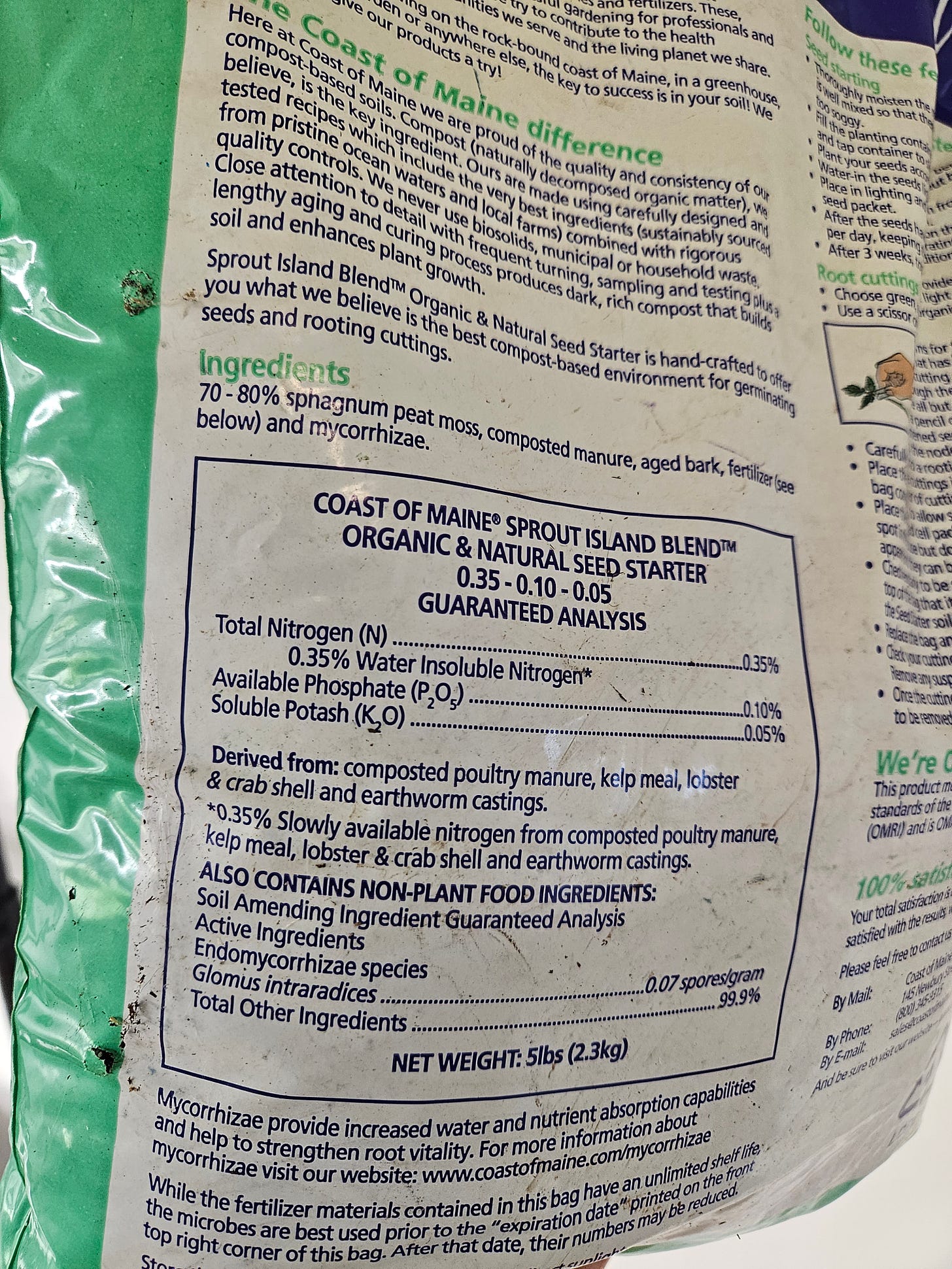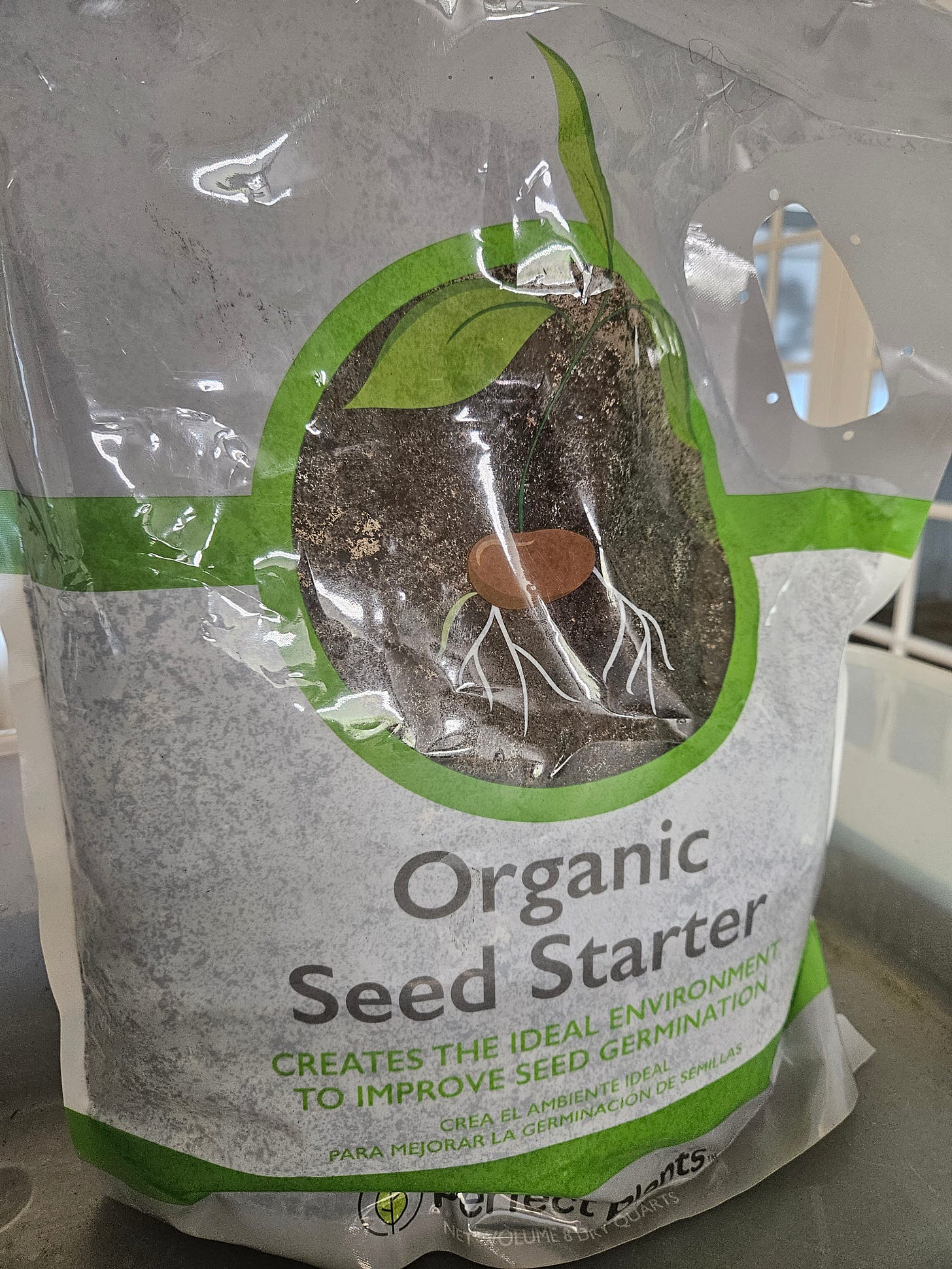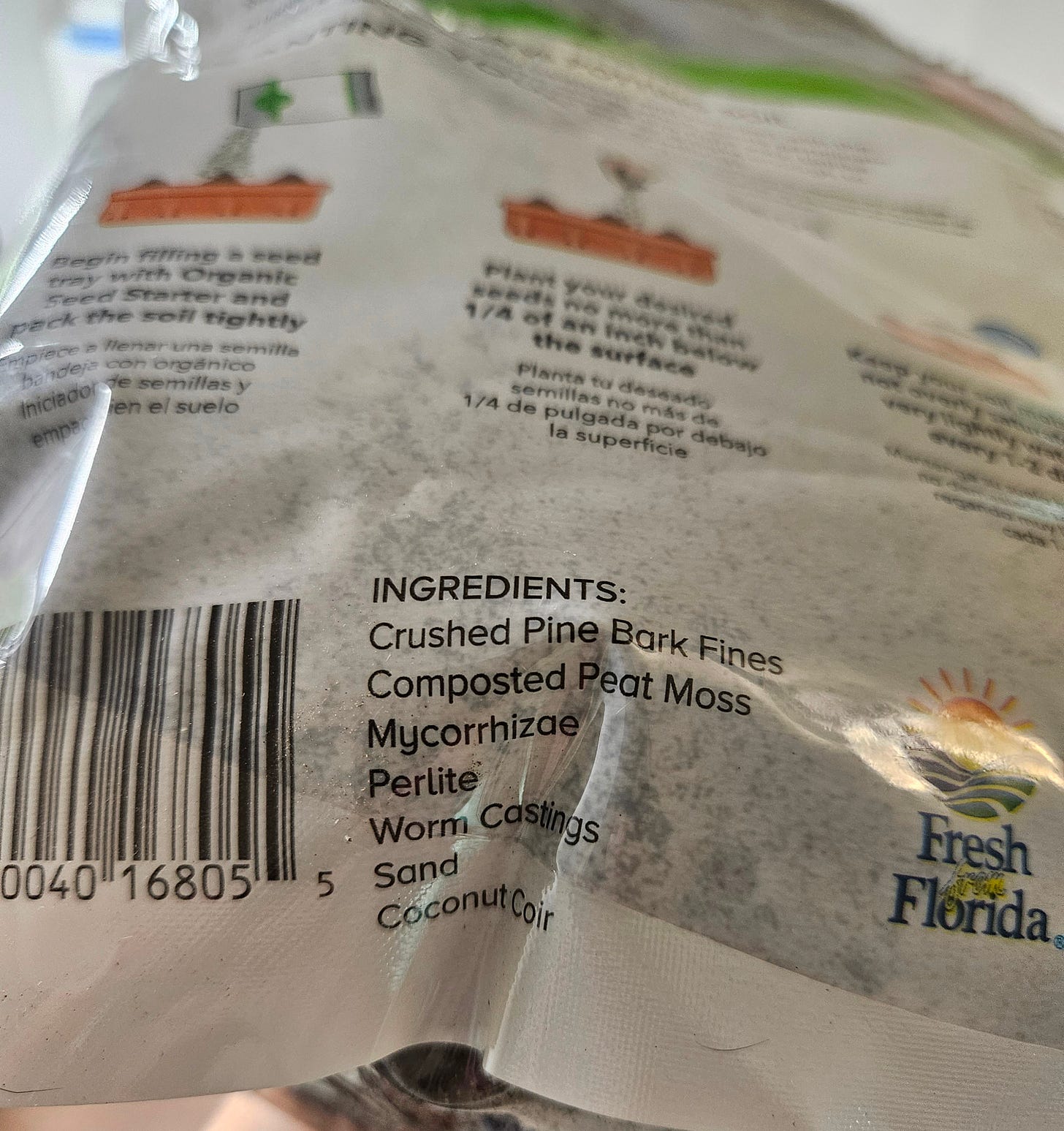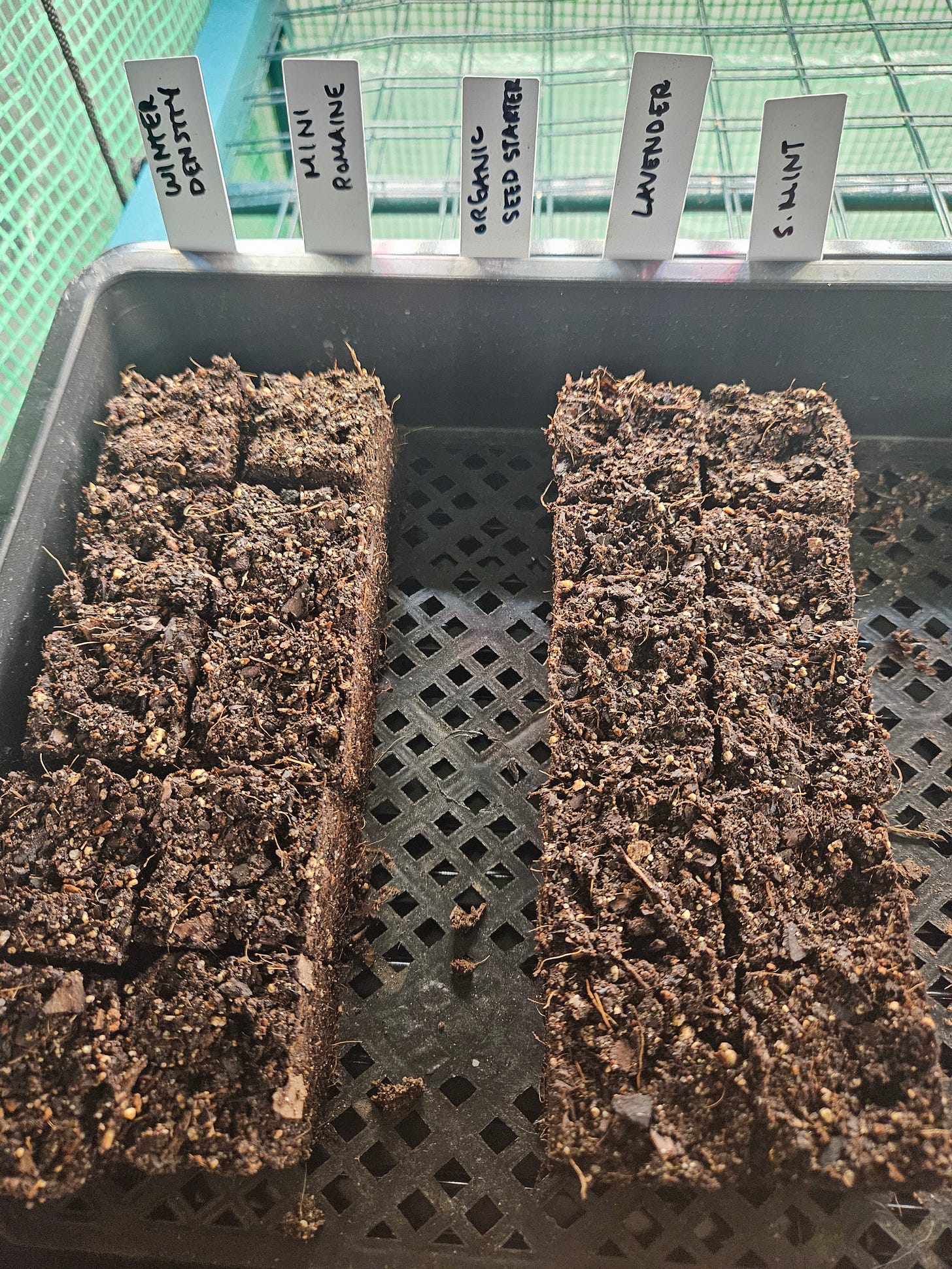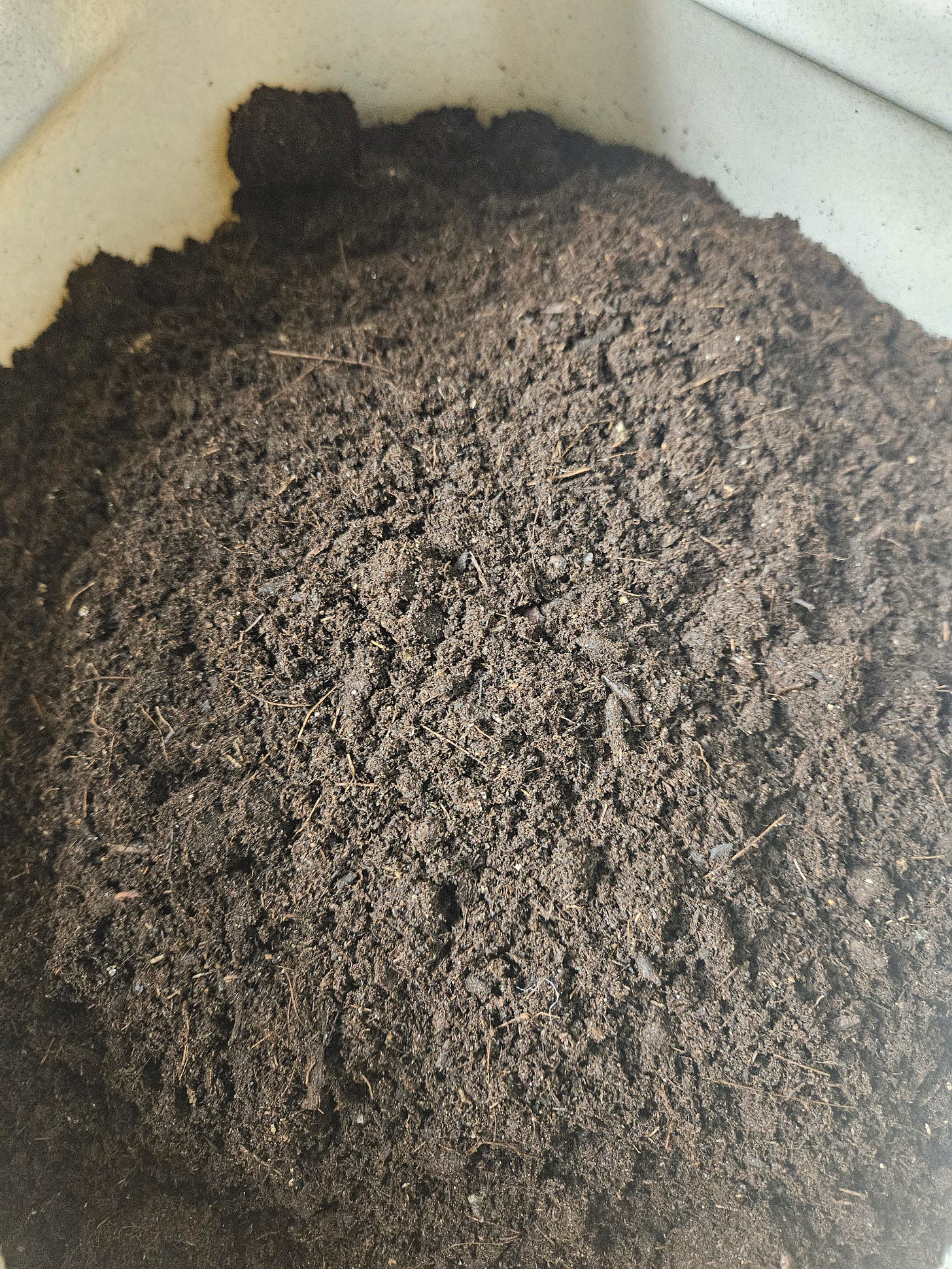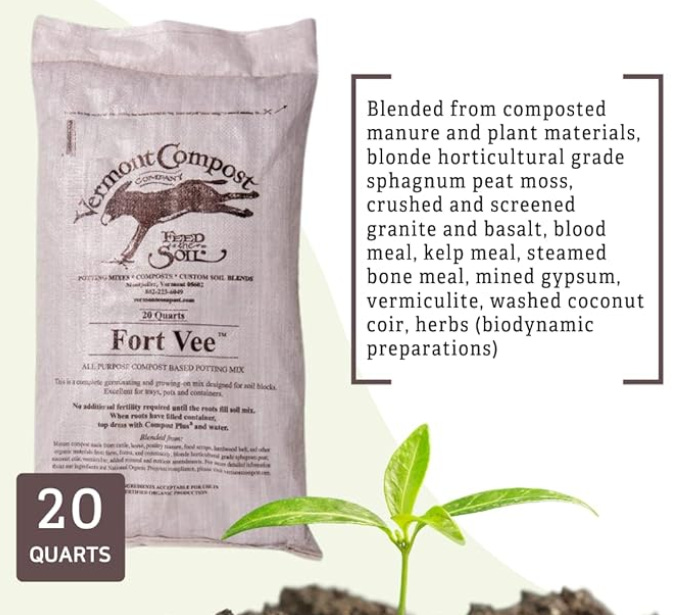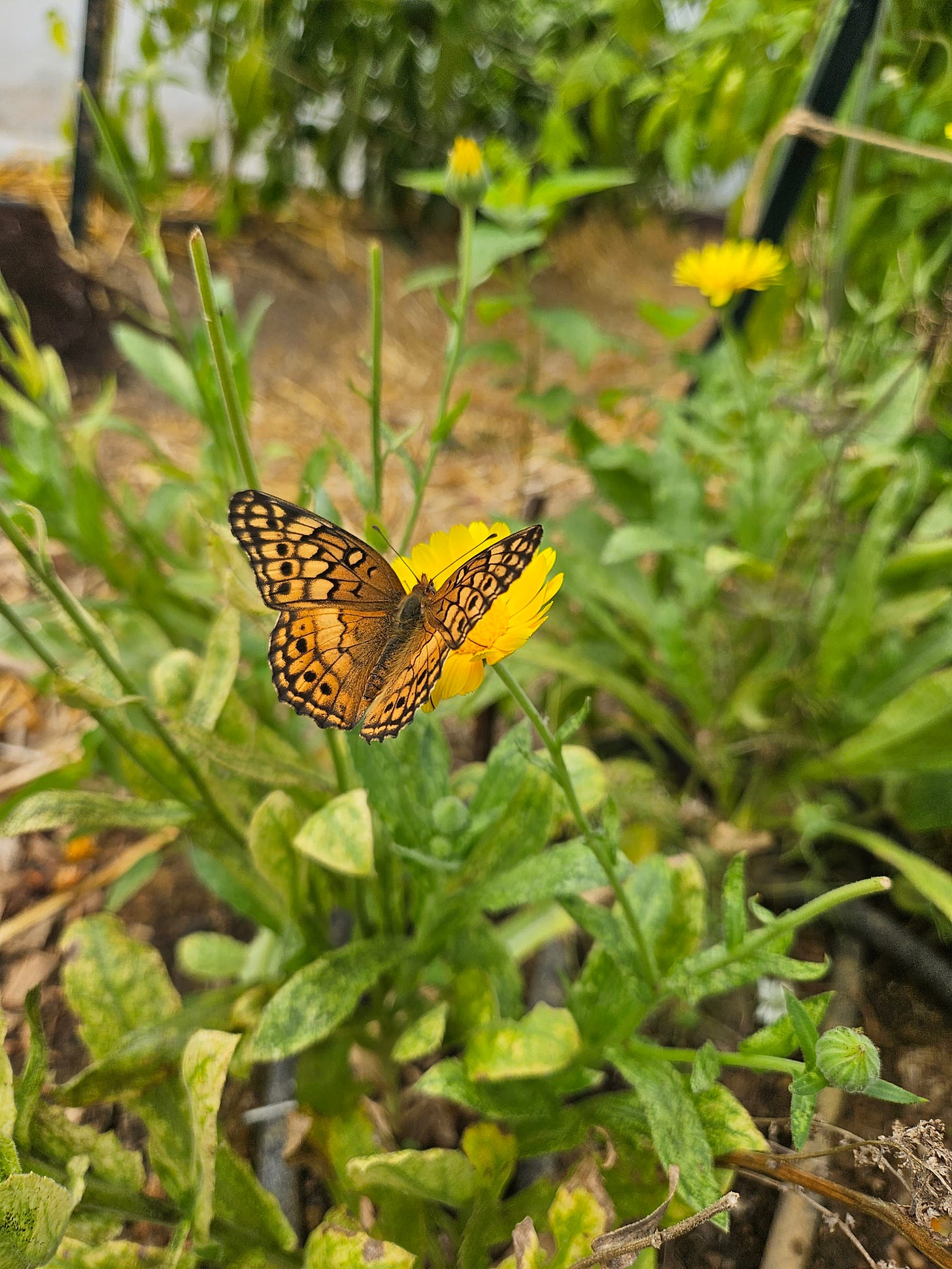Every season, I grow 99% of my plants from seed in 1” and 2” soil blocks. Over the course of the last year, the only non-seeded plants in my garden were my strawberries and potatoes (depends on if you want to call seed potatoes true seeds). So, it’s extremely important that I have an excellent seed starting medium and that my chosen medium doesn’t cost a fortune because I use a lot of it.
For the past two years, I have been exclusively using Peaceful Valley’s Quickroot. I love Quickroot so much that I am surprised I am willing to try other seed starters. The reason for this: The cost of shipping. While three bags of the stuff only costs $50.97 and would last me an entire year, it costs an additional $94.29 to ship it to me. As someone who grew up quite poor, it is difficult for me to swallow paying more for shipping than the item itself.
Now, I am willing to do it if Quickroot is the best seed starting medium out there. However, if there is something comparable or even better on the internet (ahem, Amazon) I will be switching over.
In order to find out which organic seed starter on the internet is the best, I decided to run a trial.
The method
The primary outcomes being tested in this trial are germination percentage and seedling vigor. I want the highest percentage of germination and the strongest seedlings I can get.
So, I will test these outcomes using six different seed starting media with the only variable being the media itself. Each one will be used to create 1” soil blocks in order to start the same seeds under the same growing conditions. Each tray will be subject to the same hours of light and at the same intensity. Each nursery will be enclosed to trap moisture for the same number of days. Each medium will be wetted with distilled water.
I have chosen two lettuce varieties and two herb varieties for testing. Lettuce is very easy to germinate and grows quickly while remaining relatively small. This will allow me to observe the seedlings’ health and growth rates while not needing to worry about any one seedling shading out another or potting them up (which would end the trial). One lettuce variety seed is pelleted and the other is not.
As for the herbs, I have chosen two of the more challenging herbs to start from seed. These are spearmint and lavender. Lavender is notoriously difficult to start from seed and should be (I think) one of the best indications of a seed starting medium’s seed germinating potential. If it can start lavender, it can start just about anything.
Spearmint is a good choice for this, too, because it is surface sown — not covered up. This will be a good indication of the medium’s ability to retain moisture over the course of a week or so.
Once germinated, I will let the seedlings grow into their soil blocks for as long as possible. From my experience, the amount of time will be limited by the lettuce which establishes a larger root system in less time. I am anticipating being able to run the trial for 2-3 weeks from the seed starting date.
Meet the contestants
First, my favorite, the OG: Quickroot
Price: $16.99 per 25.71 quarts ($0.66/quart) + lots of $$ for shipping
It has a very light and fluffy texture when it’s dry. There aren’t any large chunks of wood or vermiculite, giving it a homogenously fine particle size.
The ingredients list is impressive, to me, especially because of the absence of peat moss (an over-harvested resource).
I really like that the mix provides both macro- and micro-nutrients to support the plants. Peaceful Valley does suggest, though, to supplement the medium with nitrogen fertilizer because it does not provide much on its own.
Typically, I use a hyper-diluted dose of Fox Farm’s Grow Big liquid fertilizer to supplement the nutrients after one or two sets of true leaves have formed.
Soil blocking with Quickroot is easy when you give it enough moisture. It needs a little more than the others to stick together (I imagine this is because of the coconut coir). The blocks come together evenly and densely.

Drawbacks:
As mentioned before, the primary drawback is the shipping cost. Another notable drawback is that the soil blocks are a little fragile. While they shape up very well, they don’t take much abuse which can be frustrating if you are clumsy (like me). One minor drawback is the coconut coir pieces tend to stick out of the soil blocks like thick hairs, making the blocks somewhat unsightly.
Contender #1: Espoma’s Organic Seed Starter
Price: $21.95 per 16 quarts ($1.37/quart)
For a huge brand like Espoma, I was surprised to find I really liked the fluffy texture of this seed starter. It is very fine and homogenous like Quickroot. I also really like that they include mycorrhizal fungi in the ingredients.
These fungi have a mutually beneficial relationship with plants and help them uptake nutrients and water in exchange for some sugars produced by the plant. Having it in the seed starter is a good way to ensure mycorrhizae colonize the plant roots early on.
Blocking this medium was easy, too, and the blocks seem about as sturdy as those made with Quickroot.
Drawbacks:
First is that the medium is composed primarily out of peat moss. Peat moss used to be the standard for seed starting but it isn’t a sustainable source of seed starting media for the world to use, so I’d prefer it be composed of something else (like compost or coconut coir). Peat moss does make an excellent (and maybe even unparalleled) seed starting medium, which is why it is so popular, but we have other excellent alternatives. This makes choosing peat moss as the primary substrate a bit suspect of Espoma.
Second, there is a lot of perlite in this mix. I understand why they added so much. Perlite aerates the medium, balancing the moisture retentive qualities of the peat moss. That being said, so much perlite seems to weaken the soil block structure, making it more prone to fall apart.
Lastly, there isn’t much of a macro- or micro-nutrient profile for this seed starting medium. They add limestone to adjust the low pH caused by the peat moss, which contributes some amount of calcium and magnesium but there isn’t any nutrition provided otherwise. This can be, however, a good thing for gardeners who would rather provide the nutrition to their seedlings separately.
Contestant #2: Purple Cow Organics All Natural Seed Starter Mix
Price: $28.99 per 12 quarts ($2.42/quart).
Purple Cow’s seed starter is chunkier than Quickroot or Espoma’s seed starter. There are larger (though not too large) particles of composted material. In addition, they use both perlite (meant to lighten and aerate soil) and vermiculite (used to retain water) so there a lots of those chunks in the mix, too.
Overall, the texture is less fine and less homogenous than the others, but nothing I can’t work with.
That being said, this medium blocked up extremely well and the blocks are relatively sturdy.
Purple Cow’s mix also provides a lot of nutrition for the plants. They claim it is enough to feed the plants for 45 days after germination. This nutrition is coming from the compost and an “OMRI listed granular fertilizer, and mineral complex” in the mix.
Drawbacks:
As with Espoma’s, Purple Cow’s starter is primarily composed of peat moss. Outside of that, I cannot find any nutritional information either on the bag (it might be behind the label, but if it were there I would assume it would be available elsewhere, too) or on the Purple Cow website.
They don’t say how much fertilizer is in the mix or what it is made out of, nor do they provide the nutrient (N-P-K) ratios or micronutrient profiles of either the compost or the granular fertilizer. This makes it difficult to know what to feed my seedlings, or if they need feeding at all.
Another drawback is the price, which is higher than most others per quart.
Contestant #3: Coast of Maine’s Sprout Island Blend Organic & Natural Seed Starter
Price: $14.65 per 8 quarts ($1.84/quart)
What I first noticed about this medium is its very fine, fluffy texture. It is dark with visible chunks of worm castings. After breaking up the larger worm casting chunks with my hands, the mix became homogenous.
This mix required a lot more water to get to the required consistency for soil blocking, but the blocks came out very nicely. Like Quickroot and Espoma, the blocks are on the more fragile side, and a bit crumbly, likely because of the perlite.
What I like the most about this medium is the nutrient profile. Coast of Maine uses composted poultry manure, kelp meal, lobster and crab shell, and earthworm castings to give their medium fertility. They also list the nutrient ratio (0.35-0.10-0.05) on the back of their bag. On top of that, they add in mycorrhizae.
Drawbacks:
The only two I can think of for this mix is the peat moss and the price. Although they use peat moss in the mix, they use less than the Espoma mix does. It appears as though they try to compensate for less peat moss with aged bark and compost, which I can appreciate.
It is on the pricier side, but costs significantly less than the Purple Cow medium and the medium up next.
Contestant #4: Perfect Plants Organic Seed Starter
Price: $21.99 per 8 quarts ($2.74/quart)
Well, it’s not often you run into a technological innovation in the home gardening world. So, I literally gasped when I realized this bag has a resealable opening. Very, very cool, especially for people who have small gardens and won’t use the whole bag in one go.
Right when I opened the bag I noticed some fungal growth. I checked for mycorrhizae in the mix and it was there, thankfully, otherwise I would have considered tossing this.
This mix is extremely chunky for a seed starter. Before blocking, I wasn’t sure if it would work for my seed starting method. However, as you can see below, it managed to hold itself in blocks.
As with the Espoma and Coast of Maine mixes, I like that Perfect Plants included mycorrhizae in their seed starter. I really like the worm castings inclusion as well since it offers a small amount of slow release nutrition for the seedlings, as well as some water retentive qualities.
Some of the other ingredients I find interesting, although I am not too sure how well they will work for seed starting. Pine bark tends to be on the very acidic side (4.0-5.0 pH) until it’s well decomposed. It may be decomposed, aged, or composted, but they don’t list it as such. They add in peat moss here, too, but it is listed as composted. Peat moss is also very acidic (3.0-4.0 pH), but since it is composted it may be less so.
Sand is another surprising ingredient in this mix. Typically it is added in soil amendments to increase drainage since the particle sizes are very large. Since they’ve also included perlite, I’m not too sure exactly what the sand is doing here.
Drawbacks:
In addition to the peat moss complaint, this medium is very pricey and somewhat difficult to work with. Especially for smaller seeds like mint and lavender, it is important to have a fine texture so the seedling can either take root easily or push through the soil surface easily. If a mint seed were to germinate on top of a large chunk of bark, its roots may not be able to take hold beyond that chunk. Likewise, I’m not sure if a dainty lavender seedling will be able to push these larger chunks aside in order to make it past the soil surface.
It isn’t the worst problem, but, again, the nutrient profile is not listed on the bag. I’m not sure how much worm castings were included in the mix so I don’t know, either, what kind of nutrition the seedlings will be receiving. This makes feeding them more of a guessing game than a certainty.
Lastly, I am worried that the acidity of this mix will pose a problem for the seedlings. Acidity influences what kinds of nutrients are available to the plant. Seedling vigor will be a good indication of whether or not the acidity poses a problem. It may not matter too much since the seedlings will only be spending a few weeks in the seed starting mix alone.
Contestant #5: Vermont Compost Company’s Fort Vee
Price: $36.99 per 20 quarts ($1.84/quart)
Unlike the others being trialed, Fort Vee is primarily composed of compost. Quickroot, Coast of Maine’s, Perfect Plants’, and Purple Cow’s, have compost or composted components in their ingredients, but Fort Vee’s seed starter/potting mix is mostly compost. Coming from a compost company, this isn’t too surprising.
The texture is more homogenous and fine than the others. They say they screen it to 1/2” but I didn’t find any significant chunks of composted material in there. The color is very dark and it looks dense while dry. It gets even more dense when wetted.
Vermont Compost Company claims to have designed this mix specifically for soil blocking, and it shows. My blocks came out with mostly crisp edges and are sturdy enough to stick together even when poked and prodded.
Like with Quickroot and Coast of Maine’s medium, I am impressed by Fort Vee’s ingredient list (by this point you know what I am going to say — except for the peat moss). The compost itself likely provides the majority of the nutrients, but they add in blood (great source of nitrogen) and bone meal (great source of phosphorus), as well as kelp meal and other sources of micronutrients. They even wash the coconut coir! It can get salty from being harvested so close to the ocean.
Even with all of these great ingredients, Fort Vee’s price per quart falls into the middle of the pack.
Drawbacks:
Unfortunately, Vermont Compost Company doesn’t provide a nutrient (NPK) ratio for their potting mix. Instead, they state that the fertility of their mix is adequate enough to feed the plant until the roots get to the edges of the medium or fill up the whole pot. Then, they suggest to supplement with added nutrition.
I am somewhat concerned that the medium is a little too dense for the more fragile or dainty seedlings to push through. I think the lavender will be a good test for Fort Vee in this regard. I used wetted mix to cover the seedlings for this trial which I noticed kind of clumped up. Next time I might try using dry medium and then spraying it with a misting bottle instead in order to get a finer cover over the seeds.
Bias Disclosure:
I recently received four yards of Vermont Compost Company’s Manure Compost to use as a top dressing and soil amendment when I flip my garden beds for the Fall season and over Winter. I recently started some of my Fall crop directly in the compost with really great results. So, I’m a little bit biased toward the excellence of VCC’s products. Just to be fair.
My predictions
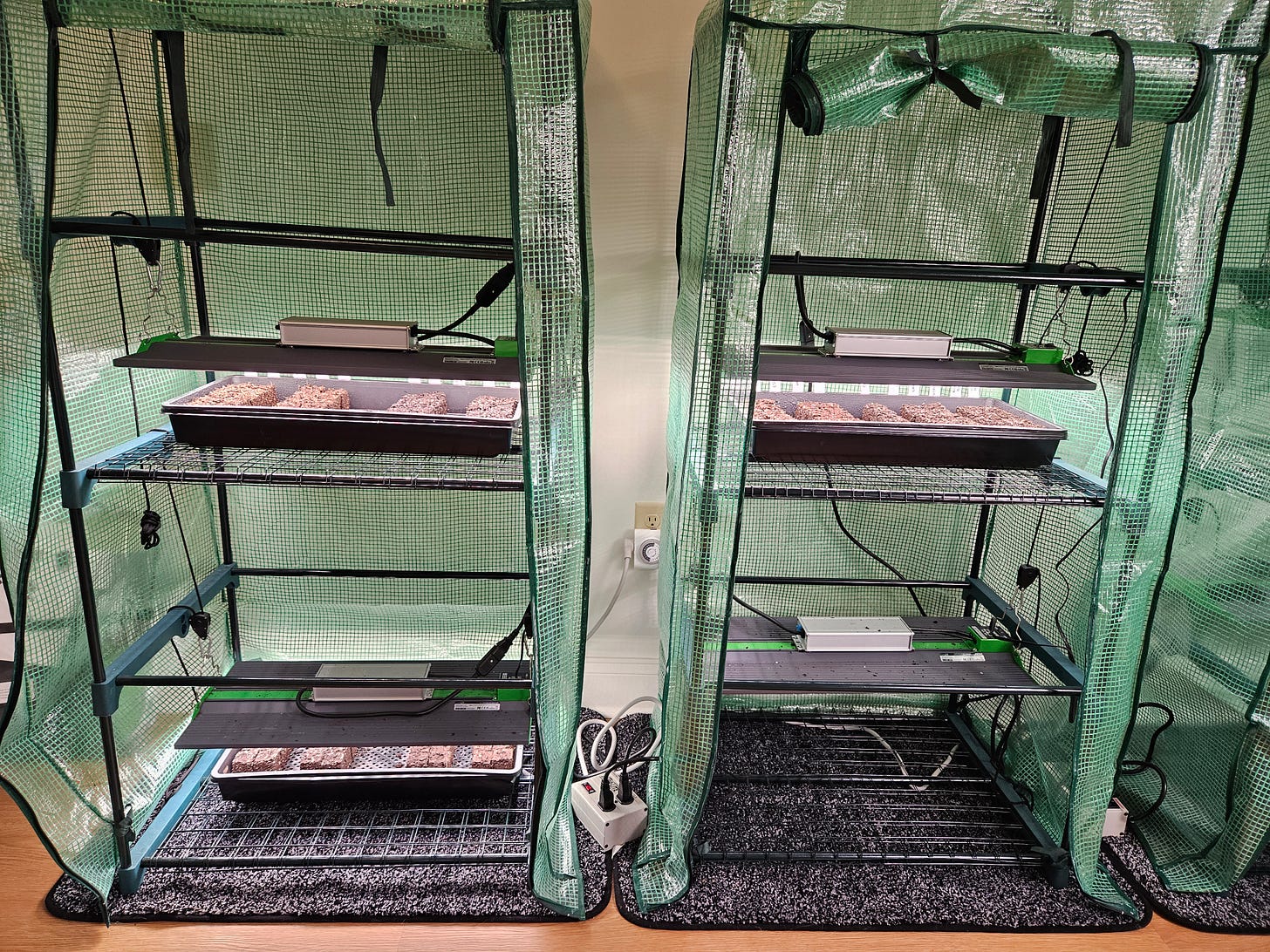
Here is how I think the results will shape up based on what I know so far:
Germination:
Quickroot
Coast of Maine
Espoma
Fort Vee
Purple Cow
Organic Seed Starter
Seedling Vigor:
Fort Vee
Coast of Maine
Quickroot
Purple Cow
Espoma
Organic Seed Starter
I started the seeds on September 24th, so I should see seedlings start to pop up in a few days. Let’s see how right/wrong I am!
What are your bets? What’s your favorite seed starting medium? If I missed a good one please feel free to point it out.
Until then, here’s a snake I saw while walking my dog today:
And a beautiful moth/butterfly (?) I saw visiting my calendula this week:






